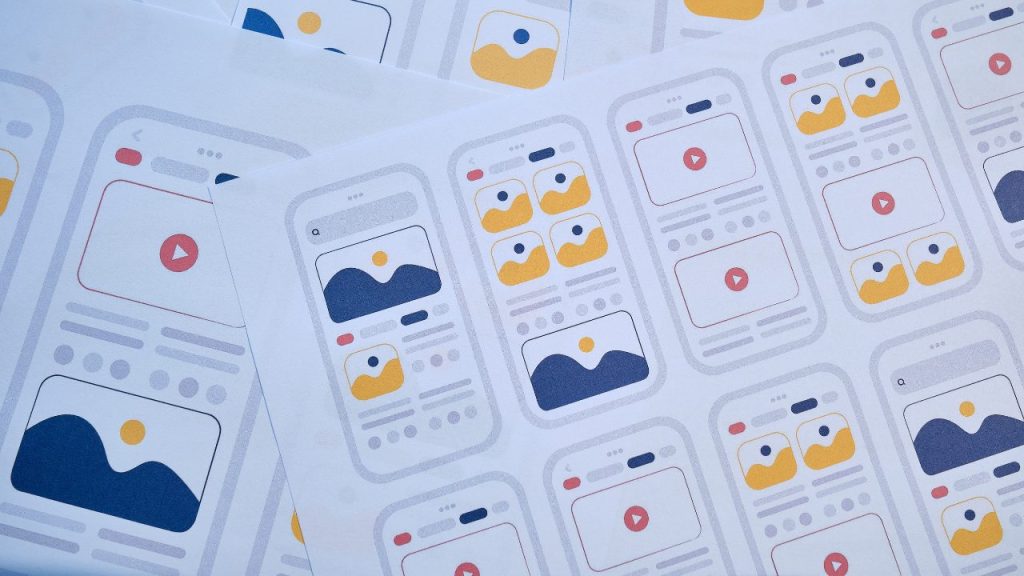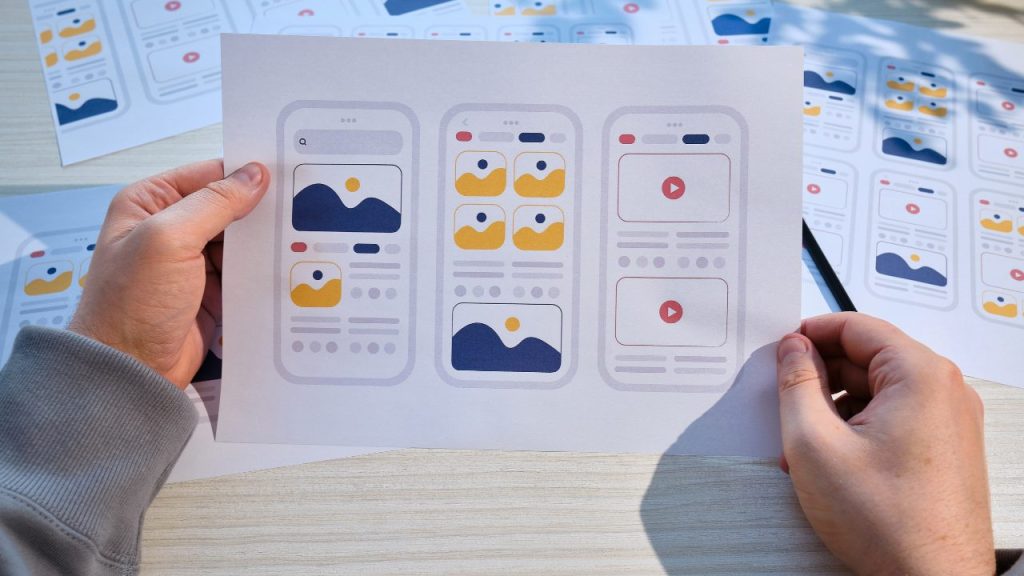Do you want to become a UI/UX designer but don’t have a spit shine of design experience? Not to worry, greenhorn. This ain’t the Wild West, and a fancy design degree ain’t a prerequisite for wrangling user interfaces. Plenty of top-notch designers rode in without one, proving raw talent and grit can overcome a lack of book learnin’.
Now buckle up, because we’re fixing to take you on the ride of your life, mapping out everything you need to know to land yourself a job knee-deep in user flows and wireframes.
You may be starting from the bottom, but stick with us and you’ll be sitting pretty at the top of the design mountain ‘before you know it. We’ll cover skills, tools, portfolios – the whole dang shebang. Just remember, pilgrim, the only limits here are the ones in your head. So let’s saddle up and hit the trail to the UI/UX dream job land! Yeehaw!
UI/UX Designer Roadmap: Do You Need a Design Degree?

So you want to become a UI/UX designer, do you? No design degree, eh? No worries, the digital world runs on skills, not pieces of paper. Forget what your parents told you – college isn’t for everyone, and a design degree certainly isn’t mandatory to land one of the hottest jobs of the 2020s.
Read More : Programming Languages for Data Analysis and Visualization in 2024
Learn the Fundamentals
Want to get into UX design? You’ll need to understand user experience principles like information architecture, user research, and interaction design. For UI design, study visual design fundamentals like color theory, typography, and layout. You can find countless free resources online to teach yourself the basics. Why pay tuition when YouTube is free?
Build Up Your Portfolio
The projects you showcase in your portfolio are far more important than any degree. Find freelance work, volunteer your skills for nonprofits, or create conceptual designs to build up your portfolio. Show how you solve real user problems through simple yet engaging interfaces. That will prove your abilities to employers far more than a fancy design degree.
Stay on the Cutting Edge

UI and UX design tools, techniques, and trends are constantly changing. To keep up, follow industry leaders, read design blogs, take free courses on platforms like Coursera or Udemy, and stay on top of the latest design software like Figma and Adobe XD. The field is evolving quickly, so continuous learning is key. No design program can teach you that.
Network Like Crazy
In the end, who you know is just as important as what you know. Attend local design meetups, join online communities, and connect with fellow designers on platforms like Dribbble or Behance. Build genuine relationships, ask questions, offer to collaborate, and put yourself out there.
When jobs open up, your network connections may be the first to know – and the first to recommend you. Degrees are overrated. With the right skills, persistence, and networking, you can become a UI/UX designer, with no college required. Now get to work – your dream job awaits!
Key Skills to Master as a UI/UX Designer

As an aspiring UI/UX designer, you’ll need to pick up some essential skills to land that dream job. Never fear, though, we’ve got you covered.
Visual Design

If you can’t make it look pretty, no one will care how seamless the user experience is. Brush up on fundamentals like color theory, typography, and layout. Get cozy with design tools like Figma, Sketch, or Adobe XD. Your portfolio site should be a work of art in itself.
User Research
You can’t design an effective interface if you don’t understand your users. Channel your inner social scientist and get good at user interviews, surveys, and persona development. Analyze how people actually behave, not how you assume they will. The tiny details matter.
Prototyping

Don’t just design static mockups. Build interactive prototypes that showcase how an interface works. Tools like InVision, Marvel, and Framer will let you simulate how users flow through a product. Prototyping brings your ideas to life and helps identify usability issues before writing any code.
Testing
Speaking of usability issues, get used to running design tests with real live humans. Watch them interact with your prototypes or designs and look for any confusion or frustration. Be prepared for criticism and use it to make improvements. Repeat testing as you iterate.
Coding

While you don’t need to be a programming whiz, have a basic grasp of HTML, CSS, and JavaScript. Know how to bring your visual designs to life on the web. Collaborate with developers and understand their needs. The more you know about code, the more realistic and useful your prototypes can become.
With a balanced blend of these skills, a passion for great design, and a little perseverance, you’ll be well on your way to becoming a UI/UX designer extraordinaire. Now go forth and make the web a more beautiful place!
Read More : Robotics for Kids: Easy Projects and Fun Activities In 2024
Building Your UI/UX Portfolio

Projects, baby, projects!
The key to becoming a UI/UX designer is having an arsenal of projects in your portfolio to show off your mad skills. Don’t have any projects yet? No worries, just make some up! Pick a website or app and redesign it. Reimagine their user experience. Dreams are free, so go wild with your ideas. When you’re done, add your mockups and prototypes to your online portfolio.
Learn the lingo
To talk the talk, you’ve got to know the lingo. Brush up on terms like “user flows,” “wireframes,” “low-fi prototypes,” and “A/B testing.” Learn the difference between UX and UI. Memorize design principles like visual hierarchy, white space, alignment, and contrast. You’ll sound like a pro in no time.
Master the tools

Today’s UI/UX designers wield a variety of digital tools to craft their designs. Familiarize yourself with popular apps like Figma, Sketch, Adobe XD, and InVision. Play around with the features and watch video tutorials to pick up techniques. Some of these tools have a learning curve, so start practicing now. Your portfolio projects are the perfect opportunity to strengthen your skills.
Stay up-to-date with trends
UI and UX design trends change faster than a stoplight. To keep up, follow industry leaders and publications on social media. Check sites like Dribble and Behance regularly to see what’s hot. Notice the latest color palettes, typography styles, and interface patterns.
Then work them into your own designs and portfolio. Employers will be impressed with your finger on the pulse of contemporary design. In 2024, anyone can become a UI/UX designer with enough passion and persistence.
Roll up your sleeves, build awesome portfolio projects, learn the tools of the trade, and stay on the cutting edge of design trends. Before you know it, you’ll be landing job interviews and well on your way to a new creative career. The future’s so bright, you gotta wear shades!
Finding Job Opportunities as a UI/UX Designer

Brush up your portfolio
So you’ve mastered the basics, maybe even earned a fancy certificate to hang on your wall. Now it’s time to find an actual job in UI/UX design. First things first, you’ll need a portfolio to show off your mad skills. Round up your best work into a simple but slick website.
Focus on projects that demonstrate how you solve problems, not just how you make things pretty. Employers want to see your process and thinking, not just cool animations.
Pound the pavement
Start scouring job sites like Indeed, LinkedIn, AngelList, and AIGA for opportunities. You may have to sort through some duds, but with perseverance, you’ll find roles that match your talents. Reach out to your network and let them know you’re on the hunt.
Someone may know of an opening that’s not even advertised yet. And of course, check out companies you’re interested in directly on their websites—many list jobs there before posting them elsewhere.
Ace the interview
You’ve found some tempting openings and scored an interview. Congrats! Now it’s time to dazzle them with your charm and design chops. Be ready to walk through examples of your work in detail, discussing the challenges, solutions, and results.
Employers want to see how you think on your feet, so they’ll likely grill you with some hypothetical design problems. Relax, take a deep breath, and think out loud. Show how you’d research users, define the problem, and iterate on ideas.
Demand fair pay
If an offer is extended, you’re in a strong negotiating position. Do some research on typical salaries for UI/UX designers with your level of experience. Don’t settle for less than you deserve in your excitement to land a job.
Employers may try to take advantage of your eagerness, so stand firm in asking for fair compensation. Be willing to walk away from a lowball offer if needed. The right opportunity at the right price is out there.
With a little hustle and persistence, you’ll be well on your way to finding a role that lets your design talents truly shine through. Before you know it, you’ll be solving real-world problems and crafting cutting-edge user experiences. The UI/UX design journey may have started as a dream, but now it’s your reality.
Conclusion
So there you have it, a complete roadmap to becoming a UI/UX designer in 2024. No design degree is required – just passion, perseverance, and a willingness to learn. The tech world needs more empathetic designers like you to create intuitive digital experiences.
Go forth, absorb all the design principles, and refine your craft through practice, and soon you’ll be the one advising aspiring UI/UX designers. The world of design awaits.
Read More : How to Learn Basic Cloud Computing: 5 Steps to Get Started
 Oko Dot All In One Technology Solutions By Likhon Hussain
Oko Dot All In One Technology Solutions By Likhon Hussain
